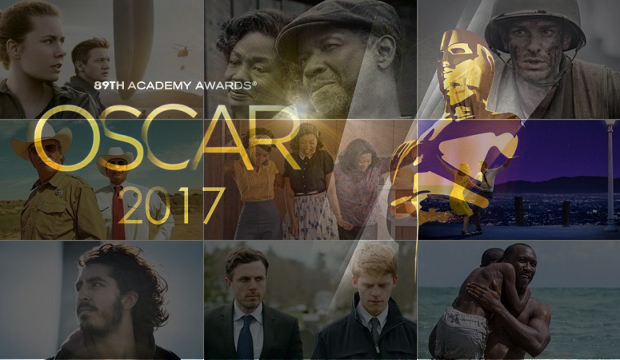When the 2015 and 2016 Academy Award nominations were released, many in Hollywood and on social media were deeply offended by the lack of racial diversity among the nominees, especially in the prominent categories of best actor / actress, and best supporting actor / actress, where only white actors and actresses were nominated. So did any changes take place in 2016 that are reflected in the 2017 nomination list?, especially the representation of people of color in the nomination list?
After the 2015 nomination announcement, the #OscarSoWhite and #OscarNorms hashtags began trending on Twitter as that was the first since 1998 that no person of color, Hispanic or Asian was nominated for the Academy Awards in the acting categories. Moreover, when the 2016 nominations were released and again the acting categories were only white people, the #OscarSoWhite hashtag resurfaced, with an outcry on social media and a boycott of the Oscars spearheaded by Jada Pinkett-Smith and Spike Lee. The outcry after the 2016 nominations was also a result from many feeling that 2015 had produced material that was worthy of nominations and that the Academy had passed over well-reviewed performances in the movies Creed, Straight Outta Compton and overlooked prominent actors of color like Idris Elba (Beasts of No Nation), Michael B. Jordan (Creed), Will Smith (in Concussion), and the many young actors in “Straight Outta Compton”. And even when there was nominations for these movies, only white people were nominated. For example, for the movie Creed, only Sylvester Stallone was nominated, while the film’s black writer-director, Ryan Coogler as well as the lead actor, Michael B. Jordan, were not nominated.
Because of the upset from the 2016 nominations, Academy president Cheryl Boone Issacs ushered in new membership rules and added 683 new members as a way to diversify a predominantly white, male and elderly group. The academy now numbers 6,687 people. These are the first Oscars voted since this change [source].
So did 2016 bring in new opportunities for diversity at the Oscars? The 2017 Oscar nominations were released last week on the 24th January and in this post I analyze the changes, if any, that have occurred in this year’s nominations in comparison to those of 2015 and 2016. For this post, I only analyze the nominees in the acting categories as well as the directing categories, this is because many on social media also felt that there were directors of color that were passed over by the Academy, for example Ava DuAvernay for her work in Selma.
Table below summarizes the nominees for the 2017 Oscars in the four acting categories.

In comparing the above nominees to previous two years, the Figure below shows the ethnic composition among the nominees in the four acting categories. The figure captures the distribution of white people (blue), people of color (orange) and other ethnicities – ‘other’ (grey).

From the figure above we see that there has been a positive change in the number of nominations for people of color in 2017 when compared to 2015 and 2016. Especially in the best supporting actress category, where majority of the actress nominated are black.
I further looked at the changes, if any, among the nominated directors. These include directors nominated in the Best Director category and the directors of the documentaries included in the Best Documentary Feature category. Figure below gives the distribution of white people (blue), people of color (orange) and other ethnicities (grey) in the years 2015 to 2017.

From the figure above, we see that the 2017 nomination list had a higher representation of persons of color than 2015 and 2016, especially for the Best Documentary Feature category. Notably, four out of the five directors in the nominated feature documentary are persons of color: Ava DuVernay, Raoul Peck, Roger Ross Williams, and Ezra Edelman. In particular, among the nominated directors for both film and documentaries, there is still a dominance of males, with only two females in 2015 (Laura Poitras and Rory Kennedy), one in 2016 (Liz Garbus) and one in 2017 (Ava DuVernay), all being in the Documentary Feature category. Ava DuVernay is actually the only director who is female and a person of color among the analyzed three years.
So, has there been more diversity among the 2017 nominees? Based on the analysis above, this year’s nominations definitely have a higher representation of persons of color in the acting and director categories than the previous two years. With a total increase from zero nominees in 2015 and 2016 to 11 nominees in 2017 (see Figure below). In particular, the biggest change is reflected among the best supporting actress and best feature documentary categories. However, There is still a small number of other ethinicities represented, even in the 2017 nominations.

There is no reason however to see these changes as due to the social media outcry or the boycott. Many of these movies have been years in the making and all the actors and actress are on those lists due to their own merits. More good quality movies directed, produced and acted by a diverse set of people will lead to more diversity in the Oscar nominations.
(P.s: If you notice any mistakes in the data above please let me know.)
Also published on Medium.
